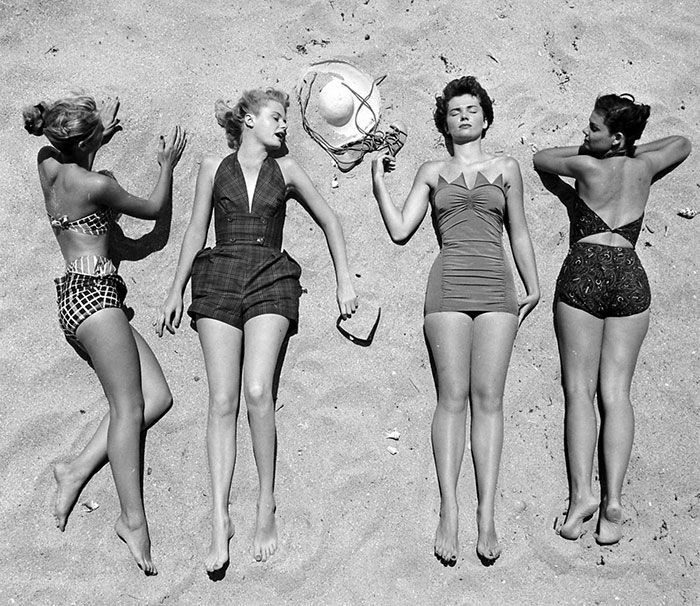Why Swimwear is Synonymous with Italy
- BY ISSIMO
- June 14, 2023

The sun-drenched shores of Italy have long been synonymous with style, elegance, and a carefree embrace of life. The Bel Paese’s summer sartorial prowess perfectly encapsulates that: From sandals to sunglasses, the country has become the epitome of hot-weather fashion done right – and a symbol of pure, laidback cool.
That includes swimwear, too. The modern bikini might have been a French invention – though historians and archaeologists have suggested that bikinis have been around since the beginning of the Roman Empire – but it’s Italian designers, tastemakers, and above all women who have turned it into a staple of beach holidays and dolce vita vibes. The same goes for one-pieces and pareos. It’s on the coasts of Italy – be they Porto Ercole, Ischia or Palo Laziale – that those staples have really come onto their own.
Ready to delve into the history of swimwear in the boot-shaped country? Keep reading below.
In the early 1900s, the concept of a swimsuit as we know it today was still in its infancy. Modesty prevailed, and women’s swimwear resembled more of a functional, conservative garment than a fashionable statement.
In Italy, as in many other countries, that generally translated into long-sleeved tops paired with knee-length bloomers, reflecting the societal norms and expectations of the time. These low-key ensembles aimed to preserve a sense of decorum and were often made from heavy fabrics that hindered movement in the water.
Luckily, changing social dynamics ushered in a new era for swimsuits in the 1920s. Inspired by the Art Deco movement and the newfound freedoms of the decade, Italian fashion designers began to experiment with bolder designs and lighter materials, pushing the envelope for what beachwear could be. One notable pioneer was the acclaimed Italian designer Elsa Schiaparelli, who introduced innovative swimsuits featuring cut-outs, daring necklines, and vibrant patterns. These avant-garde designs embraced the spirit of the era and marked a pivotal shift towards a more liberating and glamorous beachwear aesthetic.
As Italy’s fashion industry flourished in the post-World War II years, the swimsuit continued to evolve, reflecting the country’s rich artistic heritage. That, oddly enough, meant one-pieces had the opportunity to shine. The 1950s witnessed in fact a popularisation of the more modest silhouette, with one-piece swimsuits becoming the norm. Emphasising the feminine form, these designs often featured halter necklines, cinched waists, and playful prints. The iconic Italian actress Sophia Loren, with her timeless beauty and undeniable charm, epitomised the allure of these sophisticated swimsuits, capturing the imagination of women worldwide.
A decade later, things changed again.

The 1960s brought about a cultural revolution, and swimsuit styles took a daring turn. Italian fashion designer Emilio Pucci in particular, renowned for his vibrant prints, introduced the world to an all-Italian version of the bikini (which had been first ‘invented’ in 1946 by French engineer Louis Réard), bringing his modern twist to the garb with stylised floral and scrolling leaf designs, loud motifs and a bold palette.
It proved a hit. By the 1970s and 80s, the bikini had transformed into a symbol of liberation and body confidence, and its popularity skyrocketed across Italy’s picturesque beaches. From the colourful prints to the revealing cuts, the piece became synonymous with the Italian dolce vita lifestyle and forever changed the landscape of swimwear.

Today, Italian swimwear is revered for its impeccable craftsmanship, attention to detail, and timeless elegance. Classic one-pieces, glamorous bikinis, and stylish tankinis coexist, providing women with a multitude of choices to express their individuality and style on their summer vacations, and look the part whether poolside or lounging by the sea.
Along the way, a crop of cool new beachwear brands and designers have emerged too, setting new trends and playing with new materials that continue to expand the possibilities of what great swimwear can be.
Throughout the latter half of the 20th century and into the 21st century, Italian designers continued to experiment with and redefine the swimsuit. Names such as Roberto Cavalli, Versace, and Missoni brought their distinct styles to the beachwear scene, infusing it with opulence, sensuality, and intricate patterns – but also romantic femininity and sleek minimalism. Swimsuits transformed into works of art, with embellishments, embroidery, and luxurious fabrics gracing the beaches of Italy and beyond. Yet, amidst this ever-changing landscape, one constant has remained: the celebration of the female form. From high-waisted bottoms that flatter the waistline to strategically placed ruching that accentuates curves, contemporary Italian swimwear has in fact been at the forefront of elevating women’s bodies, showing that anyone can look good in a good swimsuit – and that there’s no such thing as a one-size-fits-all “beach body.”

Lido, a Venice-based indie label ISSIMO has now partnered up with for two seasons in a row, is one of those brands. Its pieces – made by artisan workshops in Northern Italy specialised in the production of swimwear – are all about an independent identity and telling stories about Italian summer, weaving functional purpose with freedom, self-expression, and unapologetic style. A case in point? The ISSIMO x Lido “Love is Love” collection, which embraces vibrant solid colours inspired by the rainbow, incorporates quick-drying fabrics, and brings striking lines to each creation, ensuring a diverse range of silhouettes to cater to every individual style.
The best swimwear is the one you want to buy whatever the weather – and Italy does it best.